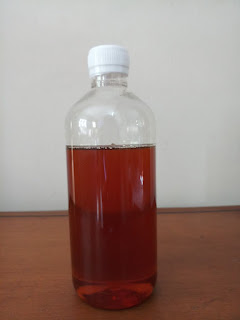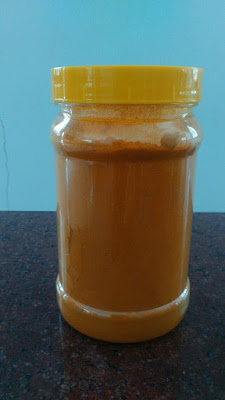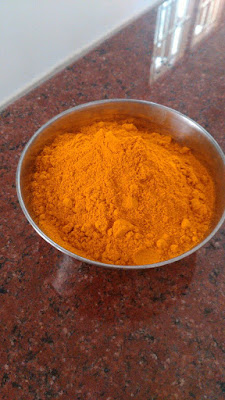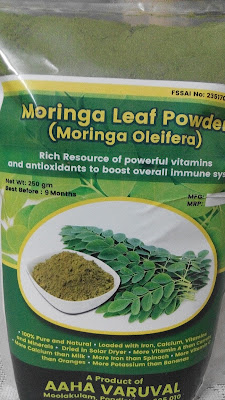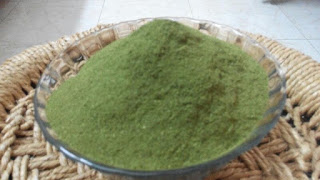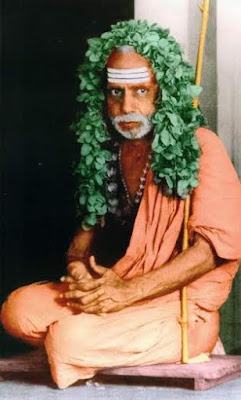Source: Deivathin Kural Volume 7
Narrated by His Holiness Sri Kanchi Mahaswami
ஏரண்டகர்
என்று ஒரு ரிஷிக்குப் பெயர்.
''ஏரண்டம்''என்றால் ஆமணக்கு. ஆமணக்குக்
கொட்டையிலிருந்துதான் விளக்கெண்ணெய் எடுப்பது. இந்த ரிஷியின் பெயருக்கு
''விளக்கெண்ணெய் சாமியார்''என்று அர்த்தம். கேலிப்பெயர்
மாதிரி தெரிகிறது. ஜனங்களாக வைத்த பெயர்தான். அதற்குக்
காரணம் உண்டு. கும்பகோணத்துக்கு மேற்கே
இரண்டு மைலில், ஸ்வாமிமலைக்குப் போகிற
வழியில் கொட்டையூர் என்று ஒரு ஸ்தலம்
இருக்கிறது. கொட்டையூர் என்று ஏன் பேர்?
எத்தனையோ கொட்டைகள் இருகின்றன. இருந்தாலும் கொட்டை என்று இரண்டுதான்
முக்கியமாக சொல்லப்படுகின்றன. ஒன்று ஆத்மார்த்தமானது - ருத்ராக்ஷத்தைக்
கொட்டை என்றே சொலவார்கள். சிவ
தீக்ஷி செய்து கெண்டு ருத்ராக்ஷம்
போட்டுக் கொண்டிருப்பவர்களைக் 'கொட்டை கட்டி'என்பார்கள்.
இந்தக் கொட்டை, மனஸில் சேருகிற
அழுக்குகளை எடுப்பது.
இன்னொரு
கொட்டை, வயிற்றில் சேருகிற அழுக்குகளை, கெடுதல்களை
எடுக்கிற ஆமணக்குக் கொட்டை. முத்துக்கொட்டை, கொட்டைமுத்து
என்றும் சொல்வார்கள். அதை ஆட்டித்தான் விளக்கெண்ணெய்
எடுப்பது. வயிற்று அடைசலைப் போக்குவதோடு
இன்னும் பல தினுசிலும் தேஹாரோக்யத்துக்குப்
ப்ரயோஜனப்படுவது. வயிறு லேசாகி, தேஹம்
ஆரோக்கியமாக இருந்தால்தான மனஸும் லேசாகி ஈச்வரபரமாக
நிற்கும். அதனால் ஆமணக்கு ஆத்மார்த்தமாகவும் நல்லது
செய்வதே. ருசியும் வாஸனையும் ஸஹிக்காவிட்டாலும் ''நல்ல ருசி, நல்ல
வாசனை''என்று நாம் தின்றதுகளால்
ஸங்கடம் உண்டாகும்போது உதவுவது ஆமணக்குத்தான்.
லோகத்தில்
அடைகிற இந்திரிய ருசிகளும், விஷய வாஸனையும்தான் ஜனங்களுக்கு
இஷ்டமாயிருக்கின்றன. இந்த வழியிலேயே போய்
ஜனங்கள் பாபத்தையும் துக்கத்தையும் பெருக்கிக் கொள்ளும்போது மஹான்கள் அவர்களை ரக்ஷிக்க உபதேசம்
பண்ணுகிறார்கள். அந்த உபதேசம் விளககெண்ணெய்யாகத்தான்
தோன்றும். ஆனால் அதுதான் உண்மையில்
விளக்கும் எண்ணெய். 'பல் விளக்குவது', 'பாத்திரம்
விளக்குவது'என்று ஸாதாரண ஜனங்கள்
சொல்லுவதில் நிரம்ப அர்த்தம் இருக்கிறது.
ஒன்றிலே இருக்கிற அழுக்கைத் தேய்த்துப் போக்கி விட்டால் அது
சுத்தமாகி, விளக்கம் பெற்றுவிடுகிறது என்பதைத்தான் இப்படிச் சொல்கிறார்கள். வயிற்றில் இருக்கிற அழுக்குகளை அலசிப் போக்கி சுத்தமாக்கி
வைப்பதே விளக்கெண்ணெய். மஹான்களின் உபதேசம் மனஸில் உள்ள
அழுக்குகளை தேய்த்து அலம்பி விளக்கி வைத்து
ஞான விளக்கை ஏற்றி வைப்பது.
கொட்டையூர்
என்று சொன்னேனே, அது ரொம்பவும் பூர்வ
காலத்தில் ஊராகவே இல்லாமல் ஆமணக்கங்
காடாகத்தான் இருந்ததாம். ஏதோ ஒரு ஸந்தர்ப்பத்தில்
அங்கே ஒரு கொட்டைமுத்துச் செடியின்
கீழ் பரமேச்வரன் லிங்கமாக ஆவிர்பவித்தார். அப்புறம் காடு ஊராயிற்று. புண்ய
ஸ்தலமாயிற்று. ஆமணக்கின் கீழ் இருந்து ஸ்வாமி
வந்ததால் அதற்கு கொட்டையூர் என்றே
பெயர் ஏற்பட்டது. இப்போதும் அங்கே ஸ்தல விருக்ஷம்
ஆமணக்குத்தான்.
இந்த
ஊரில்தான் அந்த ரிஷி பல காலமாகத்
தபஸ் பண்ணிக்கொண்டிருந்தார். அதனால் 'கொட்டையூர்க்காரர் என்றே அர்த்தம்
தருகிற 'ஏரண்டகர்' என்ற பெயரை அவருக்கு
ஜனங்கள் வைத்து விட்டார்கள். பிற்காலத்தில்
அந்த பெயர் அவருக்கு இன்னொரு
விதத்திலும் பொருந்திவிட்டது. ஆமணக்கு எப்படி தன்னையே
பிழிந்து கொண்டு எண்ணெய்யாகி ஜனங்களுக்கு
உபகரிக்கிறதோ அப்படித் தன்னையே லோகோபகாரமாக இந்த
ஏரண்டக ரிஷியும் தியாகம் செய்துகொண்டார். அந்தக்
கதையைச் சொல்லத்தான் ஆரம்பித்தேன். உயிர்த் தியாகிகள், Martyrs என்று
ஏதேதோ சொல்கிறார்களே, அந்தத் தத்வம் ஸமீப
காலத்து தேச பக்தியில் தான்
தோன்றியதென்றில்லை; ததீசியிலிருந்து எத்தனையோ மஹரிஷிகள்கூட ஆதியிலிருந்து ஜனஸமூகத்தின் க்ஷேமத்துக்காக உயிரையே கொடுத்திருக்கிறார்கள் என்பதற்கு உதாரணம்
காட்ட நினைத்துத்தான் ஏரண்டகர் கதை ஆரம்பித்தேன்.
காவேரி
தடம் மாறியது
அவர்
இருந்த காலத்தில் காவேரி தமிழ் நாட்டுப்
பக்கமாகப் பாயவே இல்லை. கொடகில்
உற்பத்தியாகிற காவேரி அப்போது வேறே
ஏதோ வழியில் ஓடி, கொஞ்சம்
தூரத்திலேயே 'அரபியன் ஸீ'என்கிற
மேற்கு ஸமுத்திரத்தில் விழுந்து கொண்டிருந்ததாம். தலைக்காவேரி, மெர்க்காராவில் எவ்வளவோ மழை பெய்த
போதிலும் காவேரி பிரவாஹம் விஸ்தாரமாக
ஓடி உலகத்துக்கு விசேஷமாகப் பிரயோஜனப்படாமல் சிற்றாறாக ஓடி வீணாக மேற்கு
ஸமுத்திரத்தில் விழுந்து வந்ததாம்.
அந்த
ஸமயத்தில் சோழ தேசத்தை ஆண்டு
கொண்டிருந்த ராஜா, ''அடடா அகஸ்தியர்
கொண்டு வந்து விட்டிருக்கும் இந்த
புண்ய தீர்த்தம் இன்னும் எவ்வளவோ பெரிசாக
ஓடி, இன்னும் எத்தனையோ ஜனங்களுக்கு
உபயோகமாக முடியுமே!இந்தச் சோணாட்டில் ஜீவநதி
எதுவுமே இல்லையே!நம்முடைய சீமைக்குக்
காவேரி பாயும்படி பண்ணிவிட்டால் எவ்வளவு நன்றாயிருக்கும்?"என்று நினைத்தார்.
உடனே
தலைக்காவேரிக்குப் போய் அங்கே தபஸ்
பண்ணிக் கொண்டிருந்த அகஸ்திய மஹர்ஷிக்கு நமஸ்காரம்
பண்ணினார். பூர்வத்தில் அகஸ்தியருக்குப் பத்தினியாக இருந்த லோபாமுத்திரையைத்தான் பிற்பாடு அவர்
காவிரியாகக் கமண்டலத்தில் கொண்டு வந்திருந்தார். அந்தக்
கமண்டலத்தைப் பிள்ளையார் காக்காய் ரூபத்திலே வந்து கவிழ்த்துவிட்டு, காவேரியை
நதியாக ஓடும்படி செய்திருந்தார். நதி என்றால் அது
ஏதோ அசேதன ஜலப்பிரவாஹமில்லை. அது
ஒரு தேவதா ஸ்வரூபமே. காவேரி
தேவி பதியின் மனஸை அறிந்தே
அவரை விட்டு ரொம்ப தூரம்
ஓடிவிடக் கூடாதென்று தான் தன் கதியை
ஒருவிதமாக அமைத்துக் கொண்டு சிற்றாறாக இருந்தாள்.
அகஸ்தியரைப்
பிராத்தித்தால் அவர் கருணை கொண்டு
காவேரியைச் சோழ மண்டலத்துக்கு அனுப்பி
வைப்பார் என்று ராஜா நினைத்தார்.
அதாவது அகஸ்தியர் லோகோபகாரமாக அவள் நீளக்க ஓடட்டும்
என்று நினைத்து விட்டால் அவளும் அவர் மனஸ்
பிரகாரமே தன் போக்கை மாற்றிக்
கொண்டு விடுவாள் என்று தெரிந்து வைத்துக்
கொண்டிருந்தார். அதனால் அகஸ்தயரிடம் போய்ப்
பிரார்த்தித்தார். அவருக்குப் பணிவிடை செய்து, அதனால்
அவர் மனஸ் குளிர்ந்திருந்தபோது, ''ஒரு வரம்
தரவேண்டும்''என்று யாசித்தார். ''காவேரி
விஸ்தாரமாகப் பாய்ந்தால் எத்தனையோ வறண்ட சீமைகள் பச்சுப்
பச்சென்றாகும். எத்தனையோ ஜனங்களுக்குக் குடிநீரும், பயிருக்கு நீரும் கிடைக்கும். இதற்கெல்லாம்
மேலாக அவள் தெய்வத் தன்மை
உடையவளாதலால் அவள் தன்னில் ஸ்நானம்
செய்கிறவர்களின் பாபங்களைப் போக்குவாள். அவளுடைய கரையைத் தொட்டுக்கொண்டு
அநேக புண்ய க்ஷேத்திரங்கள் உண்டாகி
ஜனங்களுக்கு ஈச்வர க்ருபையை வாங்கிக்
கொடுக்கும்''என்றெல்லாம் விஜ்ஞாபித்துக் கொண்டு, ''ஆகவே காவேரி பெரிசாகப்
பாய வரம் தரவேண்டும்''என்று
முடித்தார்.
மஹா
பதிவ்ரதையான லோபாமுத்ரையிடம் அகஸ்தியருக்கு இருந்த அன்பு அளவில்லாதது.
அதனால் தான் அவர் அவள்
அந்த சரீரத்தை விட்டுத் தீர்த்த ரூபம் எடுத்த
பிறகும் தம்மை விட்டுப் போகாமல்
கமண்டலத்தில் அடைத்து வைத்திருந்தார். அவளால்
லோகத்துக்குக் கிடைக்கக் கூடிய பிரயோஜனம் வீணாகப்
போகக் கூடாதென்றே பிள்ளையார் காக்காயாக வந்து அதைக் கவிழ்த்து
விட்டது. ஆனாலும் பதிக்குத் தன்னிடமிருந்த
பிரியத்தை அவள் அறிந்திருந்ததால் அவளோ
அவரை விட்டு அதிக தூரம்
ஓடாமல் சிறிய நதியாகவே ஓடினாள்.
இப்போது
சோழ நாட்டு அரசர் வந்து
அகஸ்தியரை ரொம்பவும் பய பக்தியுடன் வேண்டிக்
கொண்டவுடன் அவருக்கு மனஸ் இரங்கி விட்டது.
அவர் ஸ்வபாவமாகவே கருணை நிறைந்தவர்தான். என்றாலும்
என்னவோ நடுவே பத்தினிப் பாசம்
அவரைக் கொஞ்சம் இழுத்து விட்டது.
இப்போது ராஜா பணிவோடு எடுத்துச்
சொன்னதும் லோகோபகாரமாக எவ்வளவோ செய்யக் கூடிய
காவேரியைத் தாம் ஸ்வய பாசத்தால்
தடுத்து வைப்பது ஸரியில்லை என்று
புரிந்து கொண்டார். அவளை மனஸாரத் தியாகம்
செய்தார். '' இவளை அழைத்துக் கொண்டு
போகலாம்''என்று வரம் தந்தார்.
பகீரதனின்
பின்னால் கங்கை போனமாதிரி சோழ
ராஜாவுக்குப் பின்னால் காவேரி போனாள் - அதாவது
நம்முடைய தமிழ் நாட்டுக்கு வந்து
சோழ மண்டலத்தில் விசாலமாகப் பாய்ந்தாள்.
காவேரி
இல்லாத சோழ தேசத்தை இப்போது
நம்மால் கல்பனை செய்து கூடப்
பார்க்க முடியவில்லை. அப்படி இந்தச் சீமையின்
மஹா பெரிய கலாசாரத்துக்கே காரணமானவள்
இங்கே வந்து சேர்ந்த கதை
இதுதான்.
நதிகளும்
கலாசாரமும்
நதிகளால்தான்
'அக்ரிகல்ச்சர்' மட்டுமில்லாமல் மக்களின் 'கல்ச்ச'ரும் உருவாகியிருக்கிறது.
ஜீவ நதிகள் அவை பாட்டுக்கு
ஓடிக்கொண்டே இருப்பதில் அந்தப் பிராந்தியத்திலுள்ளவர்களுக்கு ஸம்ருத்தியாகப் பயிர்ச் செழிப்பு ஏற்பட்டு
விடுகிறது. ஆஹாரத்தைப் பற்றிக் கவலையில்லை. நதி
தீரம், தோப்பு, தென்னஞ் சோலை
என்று பரந்த ஆகாசத்தின் கீழே
வாழ்கிறபோது நிச்சிந்தையான மனஸில் உயர்ந்த எண்ணங்கள்
உண்டாகி உயர்ந்த கலாசாரங்களாக உருவெடுக்கின்றன.
உலகத்தில் எந்தப் பெரிய நாகரிகத்தைப்
பார்த்தாலும் நதி ஸம்பந்த முள்ளதாகவே
இருக்கிறது. பழைய காலத்தில் இப்போது
போல ஷிப்பிலும், குட்ஸிலும் தானியங்களை வரவழைத்துக் கொள்ள முடியாமலிருந்ததால் நதிப்
பிரதேசங்களிலிருந்தவர்கள் தவிர மற்றவற்றிலிருந்தவர்களுக்கு 'அன்ன விசாரம் அதுவே
விசாரம்' என்றாகி அப்படிப் பட்டவர்கள்
கலாசாரத்தில் அபிவிருத்தியடைய முடியாமலே இருந்திருக்கிறது. எகிப்திலிருந்த புராதனமான பெரிய கலாசாரத்துக்கு 'நைல்
நதி நாகரிகம்'என்றே பெயர் சொல்கிறார்கள்.
மெஸபொடேமியாவில் இருந்த நாகரிகத்திற்கு யூஃப்ரடிஸ்-டைக்ரிஸ் என்ற நதிகளை வைத்தே
பெயர் வைத்திருக்கிறது:ரோம ஸாம்ராஜ்யத்தின் கலாசாரத்துக்கு
அங்கே ஓடும் டைபரைப் பிணைத்துப்
பெயர் கொடுத்திருக்கிறது. எத்தனையோ பெரிசான சீனாவிலும் ஆதி
கலாசாரம் எது என்று பார்த்தால்
அது யாங்ட்ஸி-கியாங் நதியை ஒட்டி
எழுந்ததாகவே இருக்கும். நம் தேசத்திலும் ஸிந்து
நதி நாகரிகம், கங்கை நதி நாகரிகம்
என்றெல்லாம் ஆறுகளை வைத்தே உயர்ந்த
கலாசாரம் உண்டாகியிருப்பதைக் காட்டுகிறார்கள். River Valley
Civilizations என்றே பொதுவில் சொல்கிறார்கள்.
அப்படி
இந்தத் தமிழ் தேசத்தில் சோழ
நாட்டுக்கு என்று ஏற்பட்டிருக்கிற அலாதியான,
refined கல்ச்சருக்குக் காரணமானவள் காவேரி.
காவேரி
தொடர்புள்ள மூன்று ரிஷிகள்
மூன்றாமவர்
ஏரண்டகர்
காவேரியோடு
ஸம்பந்தப்பட்டவர்களாக மூன்று ரிஷிகள் இருக்கிறார்கள்.
முதலாவதாக அவளுடைய பிதாவான கவேர
மஹர்ஷி. அவர் ராஜரிஷி. கவேர
புத்ரி என்பதால் தான் அவளுக்குக் காவேரி
என்றே பெயர். 'காவேரி' என்பதைத்
தமிழில் 'காவிரி' என்கிறார்கள். காக்காய்
விரித்ததால் காவிரி, பாயுமிடமெல்லாம் 'கா'
என்னும் சோலைகளை விரித்துக் கொண்டே
போவதால் 'காவிரி'என்றெல்லாம் விளக்கம்
சொல்கிறார்கள்.... பிதா கவேரர் அவளை
வீட்டை விட்டு வெளிவராமல் கன்யகா
தர்மப்படி காப்பாற்றி வந்தார்.
அடுத்த
கஸ்திய மஹர்ஷி. இவர் காவேரியைக்
கல்யாணம் பண்ணிக் கொண்டு, 'படிதாண்டாப்
பத்தினி' என்பதற்கு ஒரு படி மேலாக
அவளைத் தம்முடைய கமண்டலுவை விட்டு வெளியே வர
முடியாதபடி பிரேமையினால் அடைத்து வைத்திருந்தார். ஆனால்
இவள் கொடகு, கன்னட தேசம்,
தமிழ் தேசம், மூன்றின் ஜனங்களுக்கும்
தாயாக அவர்களுடைய உடம்புக்கும் உள்ளத்துக்கும் தன் தீர்த்தத்தையே க்ஷீரமாக
ஊட்ட வேண்டுமென்பதுதான் ஈச்வர ஸங்கல்பம். அந்த
ஸங்கல்பம் காரியமாகணுமென்றுதான் பிள்ளையார் வந்து கமண்டலுவைத் தட்டிவிட்டார்.
அப்படியும் அவள் ஏதோ சின்ன
நதியாக ஓடி முடிந்துபோன போதுதான்
சோழ ராஜா அவளை வழி
திருப்பிவிட்டுக் கொடகிலிருந்து கர்நாடகம், அப்புறம் தமிழ்நாட்டில் முதலில் கொங்குநாடு (கோயம்புத்தூர்,
சேலம்) அப்புறம் சோணாடு (திருச்சி, தஞ்சாவூர்)
என்று பாய வைத்தார்.
தஞ்சை
ஜில்லாவுக்கு அவள் வந்த பின்னும்
ஒரு கட்டத்தில் அவள் முடிந்து போகாமல்
அவளை விஸ்தரித்துவிட வேண்டியிருந்தது;அப்படி விஸ்தாரமாக ஓடப்
பண்ணினவர்தான் மூன்றாவது அவர்தான் ஏரண்டகர். முதல் இரண்டு ரிஷிகள்
ஒரு ஸாதாரணப் பெண்ணுக்கான தர்மப்படிக் கட்டுப்பாட்டில் வைத்திருந்த காவேரியை இவர்தான் தெய்வத் தன்மை பொருந்தின
மாதா என்று புரிந்து கொண்டு
அவள் அநுக்ரஹம் இன்னும் பல ஊர்களுக்குக்
கிடைக்கும்படியாக நீட்டிவிட்டார்.
அகஸ்தியரிடமிருந்து
சோழ ராஜா வரம் பெற்றுக்
காவேரியை நம் சீமைக்குக் கொண்டு
வந்ததை 'மணிமேகலை'யில் சொல்லியிருக்கிறது. அந்த
ராஜாவின் பேர் காந்தமன் என்று
அதில் வருகிறது:
செங்கதிர்ச்
செல்வன் திருக்குலம் விளக்கும்
கஞ்ச
வேட்கையில் காந்தமன் வேண்ட
அமர
முனிவன் அகத்தியன் தனாது
கரகம்
கவிழ்த்த காவிரிப் பாவை
செங்குணக்
கொழுகிய சம்பாபதி அயல்
பொங்குநீர்ப்
பரப்போடு பொருந்தித் தோன்ற
சம்பாபதி
என்பதுதான் காவேரிப் பூம்பட்டினம். காவேரி அங்கேதான் ஸமுத்திர
ராஜனோடு ஸங்கமிக்கிறது என்று எல்லோருக்கும் தெரியும்.
அதனாலேயே அதற்கு அப்படி (காவேரி
பூம்பட்டினம் என்று) பெயர். காவேரி
அங்கே வருவதற்கு முற்காலத்தில் அந்த சோழ ராஜதானிக்கு
சம்பாபதி என்றே பெயர். புகார்
என்றும் ஒரு பெயர் உண்டு.
'பூம்புகார்'என்று சிறப்பித்துச் சொல்வதுண்டு.
நடுவிலே
வந்த ஆபத்து
இப்போதைய
தஞ்சாவூர் ஜில்லாவுக்குச் சோழ ராஜாவின் பின்னால்
வந்த காவேரி முதலில் சம்பாபதி
வரைக்கும் பாய்ந்து ஸமுத்திரத்தில் விழவில்லை. இது சீர்காழிக்குத் தென்கிழக்கில்
பத்து மைலில் உள்ள இடம்.
முதலில் காவேரி அவ்வளவு தூரம்
வரவில்லை. கும்பகோணத்துக்குக் கிட்டத்தில் கொட்டையூர் என்று இருப்பதாகச் சொன்னேனே,
அதற்கும் இன்னும் கொஞ்சம் தள்ளி
அதாவது கும்பகோணத்திலிருந்து நாலு மைல் மேற்கே
உள்ள ஒரு இடத்தோடு காவேரி
முடிந்து விட்டது.
ஸாதாரணமாக
ஒரு நதி என்றால் அது
ஸமுத்திரத்தில் விழுந்துதான் முடியும்; அல்லது வேறே ஒரு
மஹாநதியில் கலந்துவிடும் - யமுனை கங்கையில் கலக்கிறாற்
போல. கும்பகோணத்துக்கு மேற்கே ஸமுத்திரமோ வேறே
நதியோ ஏது? பின்னே, காவேரி
என்ன ஆச்சு என்றால், அந்த
இடத்தில் பெரிசாக ஒரு பள்ளம் இருந்தது; அதாவது பூமிக்கடியில் குகை
மாதிரி, 'டன்னல்'மாதிரி, அதுபாட்டுக்குப்
பெரிசாக ஒரு பள்ளம் போய்க்
கொண்டேருந்தது. அந்தப் பள்ளம் அழகாக
பிரதக்ஷிண ரீதியில் சுழித்து வெட்டினது போல பூமியைக் குடைந்து
கொண்டு போயிருந்தது. இந்தப் பள்ளத்தின் பக்கம்
காவேரி வந்ததோ இல்லையோ, அப்படியே
அந்தப் பிரதக்ஷிணக் குடைசலில் வலம் வருகிறது போல
சுழித்துக் கொண்டு உள்ளே ஓடி,
அகாதமான பள்ளத்திற்குள் மறைந்தே போய் விட்டது.
அதனால் அந்த ஊருக்கே திருவலஞ்சுழி
என்று பேர் ஏற்பட்டு விட்டது.
''சோழ
சீமையிலே இன்னம் நாற்பது ஐம்பது
மைல் காவேரி ஓடி, வளம்
உண்டாக்கி விட்டு ஸமுத்திரத்தில் விழும்
என்று நினைத்தால், இப்படி நடுப்பறவே மறைந்து
போய் விட்டதே''என்று ராஜாவுக்கு துக்கம்
துக்கமாக வந்தது.
இதிலே
இன்னொரு சமாசாரம் என்னவென்றால், இந்த மாதிரி திடுதிப்பென்று
ஒரு நதி பள்ளத்தில் விழுந்து
மறைந்து போகாமல், ஸம பூமியிலேயே கொஞ்சம்
வித்யாஸமாயுள்ள ஏற்ற-இறக்கங்களை அநுஸரித்து
ஓடி, இயற்கையாக ஸமுத்திரத்திலே விழும்போதுதான், கடைசியில் ஸங்கமிக்கின்ற இடத்துக்குக் கொஞ்சம் முன்னாலிருந்து ஆரம்பித்து,
அதுவரைக்கும் ஆறு அடித்துக் கொண்டு
வந்திருக்கும் பூஸாரமெல்லாம் அதை சுற்றிப்பரவி, டெல்டா
என்று 'ஃபார்ம்'ஆகி, ரொம்பவும்
வளப்பமான பகுதி உண்டாகும். இப்படி
இல்லாமல், ஸாரமெல்லாம் வீணாகிப் பள்ளத்துக்குள் போகிறதே என்று ராஜாவுக்கு
வியஸனமாய் விட்டது.
நெய்வேலியில்
லிக்னைட் எடுப்பதற்குத் தோண்டியபோது முதலில் பூமிக்கடியிலிருந்து எத்தனையோ
கோடி காலன் ஜலம் பம்ப்
பண்ண வேண்டியிருந்ததைப் பார்த்தோமில்லையா?சில 'கோல் மைன்'களில் [நிலக்கரிச் சுரங்கங்களில்]
பூமிக்கடியிலிருந்து ஜலம் குபீர் என்று
வெள்ளமாக வந்து பொருட் சேதம்,
உயிர்ச் சேதம் உண்டாக்குவதாகவும் அவ்வப்போது
'ந்யூஸ்'பார்க்கிறோம். இதற்கான பல காணங்களில்
ஒன்று இம்மாதிரி இடங்களில் பூர்வத்திலே ஏதாவது ஆறு பூமிக்குள்ளே
போய்ப் புகுந்து கொண்டிருப்பதாகும். மேலே பூமி மட்டத்திலே
ஆறே இல்லாமல் வற்றிப்போயும் கூட, அடியிலே மட்டும்
ஆதியில் தேங்கின ஜலம் அப்படியே
இருப்பதுண்டு. அப்புறம் அந்த பிரதேசத்தில் எதற்காகவாவது
வெட்டி, கொத்தி, தோண்டும்போது அது
பொங்கிவந்து பெரிய உத்பாதத்தை ஏற்படுத்துகிறது.
''அருள்
தாயாகத் தமிழ் தேசத்துக்கு வந்திருக்கிற
காவேரியின் ஸாரம் வீணாக்கப்படாது; பிற்காலத்தில்
அவள் உத்பாத ஹேதுவாகிக் கஷ்டத்தைத்
தருபவளாக ஆகிவிடக்கூடாது. இதற்கு என்ன செய்யலாம்?
பிலத் துவாரத்துக்குள் ஓடி அந்தர்தானமாகி விட்டவளை
எப்படி வெளியிலே கொண்டு வந்து, ஸமுத்ரத்துக்குக்
கொண்டு சேர்பபது?''என்று ராஜா நிரம்பவும்
விசாரமாக யோஜித்தார். அதே யோஜனையாக உலாத்திக்
கொண்டிருந்தார்.
அப்போது
பக்கத்தில் கொட்டையூரில் ஏரகண்டர் தபஸ் கொண்டிருப்பதைப் பார்ததார்.
அவர்க்கு ஸாஷ்டாங்கமாக நமஸ்காரம் செய்து, பிலத்துக்குள் போய்விட்ட
காவேரி வெளியிலே வருவதற்கு அவர் அநுக்ரஹம் செய்ய
வேண்டும், உபாயம் சொல்லவேண்டும் என்று
பிரார்த்தனை பண்ணினார்.
மஹரிஷி
கண்ட உபாயம்
மஹரிஷி
கொஞ்சம் ஆலோசனை செய்ததும் அவருக்கு
உபாயம் புரிந்தது. 'லோகம் பண்ணின ஏதோ
தப்புக்குத் தண்டனையாகத்தான், இப்படி, அருள்தாயாக இருக்கபபட்டவளை
அருள் வடிவமான பரமாத்மா பள்ளத்தில்
மறையப் பண்ணியிருக்கிறார். அந்த தப்புக்கு பிராயசித்தமாக
ஒரு பெரிய தியாகம் பண்ணினால்தான்
அவள் வெளியில் வரும்படியாக ஈச்வரன் அநுக்ரஹிப்பார்'என்று
ஏரண்டகருக்குத் தெரிந்தது.
ராஜானம்
ராஷ்ட்ரஜம் பாபம் :குடிகள் பண்ணும் பாபமெல்லாம்
அவர்களை நல்வழிப்படுத்தத் தவறிய ராஜாவிடம் போய்ச்
சேர்ந்துவிடும். ஆனதால் ஜன ஸமூஹத்தின்
குற்றத்தினால் ஒரு விபரீதம் உண்டாகும்போது
அதற்குத் தியாக ரூபமாக பரிஹாரம்
பண்ணவேண்டுமென்றால் அரசனுடைய உயிரைப் பலி கொடுத்தால்
கஷ்டம் நீங்கி நல்லது நடக்கும்.
அல்லது ஒரு ஞானியை பலி
தரலாம். ஞானியின் ஹிருதயத்திலிருந்து தன்னியல்பாக அது பாட்டுக்கு ஸகல
ஜனங்கள் மீதும் கருணை ஊறிக்
கொண்டிருக்கும். ஸர்வபூத அந்தராத்மாவான ஈச்வரனை
அந்த ஞானி கண்டுகொண்டவனாகையால் அவனுக்குள்
ஜன ஸமூஹம் பூரா அடக்கம்
என்று வைத்துக் கொள்ளலாம். ஆகையால் இப்படிப்பட்ட ஒரு
ஞானியை பலி தந்தாலும் மக்கள்
குலத்துக்குப் பெரிதாக ஒரு நன்மையை
ஸாதித்துத் தர முடியும்.
''என்ன
உபாயம்?''என்று கேட்ட ராஜாவிடம்
இதைச் சொன்னார் ஏரண்டகர். அதைக் கேட்டவுடன் ராஜா,
''ஆஹா, அப்படியானால் என் பிரஜைகளுக்காக, இனிமேலே
பிரளய பரியந்தம் வரப்போகிற அவர்களுடய ஸந்ததிகளின் நன்மைக்காக இதோ நானே என்
சிரஸைக் கொடுக்கிறேன். கொடகிலிருந்து காலேரியை நான் இவ்வளவு தூரம்
கொண்டு வந்தது பெரிசில்லை. இப்போது
அவளை லோகோபகாரமாக வெளியில் வரப்பண்ணுவதற்காகப் பிராணத் தியாகம் செய்யும்படியான
ஒரு பாக்கியம் எனக்கு லபித்திருக்கிறதே, இதுதான்
பெரிசு''என்று ஸந்தோஷத்தோடு பலி
கொடுத்துக் கொள்ளப் புறப்படடார்.
'ராஜ
போகம்'என்றே சொல்வதுபோல் அநேக
ஸெளக்யங்களை அநுபவித்தே பழக்கப்பட்ட சரீரத்தை அவர் இப்படி த்ருணமாத்ரமாய்
நினைத்துத் தியாகம் செய்யக் கிளம்பியபோது
ஞானியான ஏரண்டகர் சும்மா இருப்பாரா?
''அப்பா!நாங்கள் சரீர ஸுகத்தை
அறவே விட்டு, அதைப் பிராரப்த
வசத்தால் ஏற்பட்ட ஒரு சுமை
என்றே நினைக்க வேண்டியவர்கள். ஆகையால்
லோக க்ஷேமார்த்தமாக ஒரு சரீரம் பலியாக
வேண்டுமென்றால் அதற்கு முதல் பாத்யதை
எங்களுக்குத்தான். நான்தான் பலியாவேன்''என்றார்.
ஆதாயங்கள்
கேட்பதில்தான் ''எனக்கு முதல் பாத்யதை,
எனக்கு முதல் பாத்யதை, என்று
'ப்ரயாரிடி'கேட்பது பொது வழக்கம்.
இங்கேயோ சோழ ராஜாவும், மஹரிஷியிம்
தங்கள் தேஹத்தையே பரித்யாகம் பண்ணுவதில் அவரவரும் 'ப்ரயாரிடி'கொண்டாடிக் கொண்டார்கள்.
''ஜனங்களின்
தோஷம் அவர்களைத் திருத்தாத ராஜாவைத்தானே சேர வேண்டும்?''என்று
உரிமை - செத்துப் போவதற்கு உரிமை! - கேட்டார் ராஜா.
ரிஷியும்
விடவில்லை. ''உனக்கு ஜனங்களுக்காகப் ப்ராணத்
தியாகம் செய்யும் வாய்ப்பு யுத்தத்திலும் கிடைக்கிறது. நான் யுத்தம் பண்ணுவதற்கு
இடமில்லை. ஆனதனால் என்னைத் தேடிக்
கொண்டு வந்திருக்கிற இந்த ஸந்தர்ப்பத்தை நழுவ
விடமாட்டேன். c வயதிலும் என்னை விடச் சின்னவன்.
திடீரென்று c உயிரை விட்டுவிட்டால், அடுத்து
ராஜ்ய பாலனத்துக்கு யாரும் பயிற்சி பெறவில்லையாதலால்
நாடே கஷ்டத்திற்கு ஆளாகும். ஜனங்களின் கஷ்டத்தைத் தீர்ப்பதாக நினைத்து c செய்கிற தியாகமே அவர்களை
இதைவிடப் பெரிய அராஜகக் கஷ்டத்துக்கு
ஆளாக்கிவிடும்.
உபாயம்
சொன்னவன் நான் தானே?சொல்லிவிட்டு,
அதைக் காரியத்தில் பண்ணிக் காட்டவும் எனக்கு
இட இருக்கும்போது நான் சும்மா இருந்துகொண்டு
உன்னைப் பலியாகச் செய்தால் எனக்கு ராஜஹத்தி தோஷம்
உண்டாகிவிடும்''என்றெல்லாம் சொல்லிவிட்டு, அவனுடைய பதிலுக்கு கூடக்
காத்திராமல், கிடுகிடுவென்று அந்த பள்ளத்துக்கு வந்தார்.
மஹா
வேகத்தோடு அதற்குள்ளே பாய்கிற சுழலிலே தம்
சிரஸை பலி கொடுத்து விட்டார்.
அதாவது அதில் அப்படியே தலை
குப்புற விழுந்து விட்டார்.
நல்லதைச்
சொல்லி ஆபத்து !
பக்கத்திலேயிலிருந்து
இருந்து இதைப் பார்த்துக் கொண்டேயிருந்த
ஒருவர் அப்போது ஒரு ஸ்லோகம்
சொன்னதாக இருக்கிறது:
ஹிதம்
ந வாச்யம் அஹிதம்
ந வாச்யம்
ஹிதாஹிதே
நைவ வதேத் கதாசித்
ஹிதஸ்ய
வக்தாபி விபத்திமேதி
ஏரண்டகோ
நாம பிலம் ப்ரவிஷ்ட :
''யாருக்கும்
நல்லதையும் சொல்ல வேண்டாம்;கெட்டதையும்
சொல்ல வேண்டாம். ஒருபோதும் நல்லது கெட்டதுகளை எடுத்துச்
சொல்லவே வேண்டாம். நல்லதைச் சொன்னவனும்கூட ஆபத்தை அடைகிறான். உதாரணமாக,
ஏரண்டகர் என்று பெயர் படைத்தவர்
பிலத்தில் பிரவேசித்து விட்டார்''என்பது ஸ்லோகத்தின் அர்த்தம்.
இதிலும்
கொஞ்சம் நியாயமில்லாமல் போகவில்லை. லோகத்தில் எத்தனையோ நடக்கும். ஈச்வர லீலை, ஜனங்களின்
கர்ம கதி எப்படி எப்படியோ
இருக்கும். ஆனதால் உலகத்தில் இருக்கிற
தப்பு, ஸரிகளையே ஒருத்தன் எப்போது பார்த்தாலும் நினைத்துக்
கொண்டு அட்வைஸ் பண்ணிக் கொண்டே
இருப்பது என்றால் தான் ஆத்மாவைக்
கவனித்து உயர்த்திக் கொள்ள முடியாமலே போகும்.
அதனால்
தன் லிமிடேஷனைப் புரிந்து கொண்டு, நம்முடைய அட்வைஸ்
எங்கே எடுபடுமோ அங்கே மட்டும் நல்லது
பொல்லாதுகளைச் சொல்வதோடு நிறுத்திக் கொள்வதுதான் நம் மாதிரி ஸாமான்ய
நிலையில் இருக்கப்பட்டவருக்கு யுக்தமாயிருக்கும். அது தான் இந்த
ச்லோகத்தின் படிப்பினை. நல்லதைச் சொல்லிவிட்டு அது நடைமுறை ஆவதற்கு
நாமே தியாகம் செய்ய நேரிடலாமென்னும்போது,
அப்படிப்பட்ட தியாகத்துக்கு பரிபக்குவப்படாதவர்கள் ஒன்றும் சொல்லாமல் வாயை
மூடிக் கொண்டிருப்பதே ச்லாக்யம் என்ற நீதியை இதிலிருந்து
நாம் எடுத்துக்கொள்ள வேண்டும். ஆனாலும் இன்றில்லாவிட்டாலும் என்றோ
ஒரு நாள் தியாகத்துக்கு நம்மைப்
பக்குவப்படுத்திக் கொள்ள வேண்டும் என்ற
லக்ஷ்யத்தையும் வைத்துக் கொள்ள வேண்டும்.
மஹான்கள்
விஷயம் வேறே. அவர்கள் ஆத்ம
பரிபாகம் அடைந்து விட்டார்கள். ஈச்வரனுடைய
லோக நாடகம் என்ன, ஜனங்களின்
கர்ம கதி என்ன என்றெல்லாம்
தெரிந்து கொண்ட அவர்கள் எத்தனை
விபரீதம் நடந்தாலும் ''அவன் இஷ்டப்படி''என்று
சரணாகதி பண்ணிக் கிடந்தாலும் கிடப்பார்கள்;அல்லது பக்தி வேகத்தால்
அவனையே நாடகத்தை மாற்றும்படிப் பண்ணினாலும் பண்ணுவார்கள்.
அவனை
ஸுந்தரமூர்த்தி ஸ்வாமிகள் மாதிரி கெடுபடி பண்ணி
வேலைகூட வாங்குவார்கள்;அல்லது தங்கள் தபஸையெல்லாம்
த்யாகம் பண்ணி தத்-த்வாரா
[அதன் மூலம்]ஜன ஸமூஹத்தின்
பாப கர்மாவை 'ந்யூட்ரலைஸ்'பண்ணி ஒரு பெரிய
மங்களம் ஏற்படும்படியாகவும் பண்ணுவார்கள்.
உத்கிருஷ்டரான ஏரண்டகர் லோக ஹிதம் சொன்னதற்காக
இப்படி அநியாயமாக ஜீவனைப் பலி தர
வேண்டியிருக்கிறதே என்பதைப் பார்த்து எவரோ ஒருத்தர் மனஸ்
தெரிந்து, யாரும் எவருக்கும் நல்லதையும்
சொல்ல வேண்டாம், கேட்டதையும் சொல்ல வேண்டாம் என்று
ச்லோகம் பண்ணிவிட்டார்.
ஏரண்டகரேதான்
இந்த ச்லோகத்தைச் சொல்லிக் கொண்டு பள்ளத்திற்குள் இறங்கினார் என்றும் சிலர் சொல்கிறார்கள்.
அவருக்கும் அந்த ஸமயத்தில் கொஞ்சம் மனஸ் கலங்கிக்
கண்ணிலிருந்து ஜலம் வந்து, இப்படிச் சொன்னார் என்கிறார்கள். இப்படிச் சொல்வது ஸரியில்லை என்று
எனக்குத் தோன்றுகிறது. மஹான்கள் ஒரு மஹாத் த்யாகம்
செய்யும் போது நல்ல மன
நிறைவோடு லோகத்தையெல்லாம் வாழ்த்திக் கொண்டுதான் போவார்களே தவிர, தன் ஒருத்தனுக்கு
சிரமம் உண்டாயிற்றே என்று நினைத்துத் தியாகத்துக்காகப்
பச்சாதாபப் பட்டார்கள் என்பது அந்த தியாகத்தையும்
வியர்த்தமாக்கி, மஹானையும் வெற்று ஆளாக ஆக்கி
விடுவதாகும்.
எனக்கு
என்ன தோன்றுகிறதென்றால், அவர் கண்களில் ஜலம்
வந்திருந்தால் அது ஆனந்த பாஷ்பமாகத்
தான் இருந்திருக்கும் என்றே தோன்றுகிறது. ''என்றைக்கோ
ஒரு நாள் இந்த சரீரம்
போக வேண்டியதுதான்; அது ஏதோ வியாதி,
வக்கையில் போகாமல் லோகோபகாரமாக நம்முடைய
மனப் பூர்வமாகக் காணிக்கை தரப்பட்டுப் போகிறதே''என்று அவர் ஸந்துஷ்டிதான்
அடைந்திருப்பார். விளக்கெண்ணெய்ச் சாமியாராகையால் ஆமணக்குக் கொட்டை தன்னைப் பிழிந்து
கொண்டு ஜனங்களுக்கு உபகரிப்பது போலவேதான் அவரும் இருந்திருப்பார்.
கீதை,
பைபிள், குறள் போதனை ;
ஏரண்டகரின்
உத்தம உதாரணம்
கீதையிலே
யோகிகளில் உச்சநிலைக்குப்போன 'பரமயோகி'எவன் என்று
பகவான் ஒரு இடத்தில் சொல்லியிருக்கிறார்.
மூக்கைப் பிடித்தவன், குகையிலே அடைத்துக் கொண்டு கிடப்பவன், மாஸக்
கணக்காய் பட்டினி கிடப்பவன், 'ஸஹஸ்ராரம்
அது இது'என்று என்னவோ
சொல்கிறார்களே அந்த இடத்துக்குக் குண்டலிநீ
சக்தியைத் தூக்கிக் கொண்டு போனவன் ஆகியவர்களைப்
'பரம யோகி'என்று சொல்லவில்லை.
வேறே என்ன லக்ஷணம் சொல்கிறார்?
ஆத்மௌபம்யேந
ஸர்வத்ர ஸமம் பச்யதி யோ
(அ) ர்ஜுந*
ஸுகம்
வா யதி வா து:கம் ஸ யோகீ
பரமோ மத:
''அர்ஜுனா! எவன் ஸுகமாயினும் துக்கமாயினும்
எங்கேயும் தன்னையே உபமானமாகக் கொண்டு
ஸமமாகப் பார்க்கிறானோ, அவனே பரம யோகி
என்பது என் துணிபு''என்று
சொல்கிறார்.
''ஆத்மௌபம்யேந''அதாவது, ''தன்னையே உபமானமாகக் கொண்டு''என்பதைத்தான் ஓரளவுக்கு பைபிளின் ''Do unto others as
thou wilt be done! ''என்ற
Golden Rule சொல்கிறது. நமக்குப் பிறத்தியார் எப்படிச் செய்ய வேண்டுமென்று நினைக்கிறோமோ,
அப்படியே நாம் பிறத்தியாருக்குச் செய்ய
வேண்டும்.
யோகதத்தின்
கிட்டேயே போகாத தற்கால நிலையில்
நாம் என்ன நினைக்கிறோம்?
'நமக்கு
வருகிற கஷ்டத்தைப் பிறத்தியான் போக்கணும். நமக்கு தரித்ரமா, பிறத்தியான்
நமக்கு அள்ளிக் கொடுக்கணும். நமக்கு
வியாதியா, பிறத்தியான் சுச்ரூஷை பண்ணணும். நமக்கு ஒரு காரியம்
பாரமா இருக்கா, அதை பிறத்தியான் தலையில்
கட்டிவிட வேண்டும் - இப்படித்தானே நினைக்கிறோம்? இதை அப்படியே மாற்றி
நம் இடத்தில் பிறத்தியானை வைத்து, அவனுக்கு எந்த
விதத்தில் கஷ்டமானாலும் அதை நாம் போக்கணும்
என்று ஆக்கிக் கொண்டுவிட்டால் அது
தான் 'ஆத்மௌபம்யம்'.
இன்னொருத்தனைக்
கஷ்டப்படுத்தியாவது நாம் ஸந்தோஷம் அடையணும்
என்று இப்போது நினைப்பதில், இன்னொருத்தன்,
நாம் என்கிற இரண்டு பேரின்
இடத்தையும் 'இண்டர்சேஞ்ஜ்'பண்ணி விட்டால், பரஸ்பரம்
இடம் மாற்றிவிட்டால் அது தான் 'ஆத்மௌபம்யம்'.
அன்பு என்ற ஒன்றை வளர்த்துக்
கொண்டுவிட்டால் இந்த ஆத்மௌபம்யம் தன்னால்
ஸித்தித்துவிடும் என்று திருக்குறளிலிருந்து தெரிகிறது.
விச்வ வியாபகமான அன்பு இல்லாமல் நம்மிடம்
மாத்திரமே நாம் அன்பு பாராட்டிக்
கொண்டிருக்கும்போது பிறத்தியானுக்குஸெளக்கியம் தருகிற எல்லாமும் நம்மிடம்
வந்துவிட வேண்டுமென்று நினைக்கிறோம்; உத்தமமான அன்புக் குணம் நமக்கு
வந்து விட்டாலோ இது அப்படியே மாறி,
பிறத்தியாருக்கு நம்முடைய ஸகலத்தையும் கொடுத்துவிட வேண்டுமென்று தோன்றிவிடும்.
ஸகலத்தையும்
என்பதற்கு ''நம்முடைய எலும்பையும்''என்று திருவள்ளுவர் சொல்கிறார்.
அதாவது ததீசி மஹர்ஷி தம்முடைய
முதுகெலும்பையும் தேவ கார்யத்துக்காகக் கொடுத்தது
போல உயிரையும் தியாகம் செய்வதே அன்புடைமை
என்கிறார்.
அன்பிலார்
எல்லாம் தமக்குரியர் - அன்புடையார் என்பும் உரியர் பிறர்க்கு .
ஸுகம்,
துக்கம் இரண்டையும் ஸமமாகப் பார்க்க வேண்டும்
என்று கீதையில் இருப்தாகச் சொன்னேன் அல்லவா? இதற்கு லோகத்தின்
ஸுகம், துக்கம் என்று அர்த்தம்
பண்ணிக்கொள்ளாமல் தன்னுடைய ஸவ்ய இன்பம், துன்பம்
என்று பொருள் எடுத்துக் கொள்ளலாம்.
லோகத்தின் ஸுக, துக்கங்களை ஸமமாகவே
பார்த்து விட்டால் அப்புறம் அதற்குத் துக்கம் உண்டாகும்போது அதனிடத்தில்
அருள் பாராட்டி ஸுகத்தை உண்டுபண்ணுவதற்கு இடமே
இருக்காதல்லவா? தன்னுடைய ஸுக துக்கங்களை ஒன்றாகக்
கருதி, அதாவது தனக்கு துக்கம்
ஏற்படுவதையும் கருதாமல் லோக க்ஷேமத்துக்காகக் காரியம்
செய்ய வேண்டும் என்றுதான் பகவான் சொல்லி, அப்படிக்
கார்யம் பண்ணுவதை ''லோக ஸங்க்ரஹம்''என்கிறார்.
'இந்த லோக ஸங்க்ரஹத்துக்காகவேதான், உலகம் மாயையே
என்று நன்றாகக் கண்டுகொண்ட ஞானிகள்கூட, தங்களுக்கென்று ஒரு கர்மாவும் தேவைப்படாவிட்டாலும்
கர்மாக்களைப் பண்ணிக் காட்ட வேண்டும்
என்றும் விதித்திருக்கிறார்.
ஞான
நிலையில் ஸுக, துக்கம் என்ற
இரண்டையும் abstract ஆக [தனித் தத்வங்களாக]ப் பார்க்கிறபோது இரண்டும்
ஒன்றாகத்தான் இருக்கும். ஸுகமும் பொய், துக்கமும்
பொய் என்று தான் இருக்கும்.
ஆனாலும் அதிலேயே பிரேமையின் நிமித்தமாக
லோக த்ருஷ்டி மாதிரி ஒன்றை ஈச்வரன்
ஏற்படுத்துகிறபோது, ஸுகம், துக்கம் இரண்டும்
தனக்கு ஒட்டவில்லை என்று தெரிகிறபோதே, லோகத்தின்
ஸுக துக்கங்களைப் பார்த்து அது நல்ல வழியில்
ஸுகம் அடையும்போது அதில் ஒரு ஞானியும்
ஸந்தோஷப்படுகிற மாதிரியும், அது துக்கம் அடையும்போது
அதற்காக அவனும் கருணையில் உருகுகிற
மாதிரியும் இருக்கும். இப்படி அது துக்கப்படுகிற
போது அதைப் பரிஹரிப்பதற்காக அவன்
தன்னையே தியாகம் பண்ணிக் கொள்ள
முன் வருவான். 'தன்னை'என்று சொல்லும்போது
நாம் அவனுடைய சரீரத்தை அர்ப்பணம்
பண்ணுவதைச் சொல்கிறோம். ஆனால் அவனுக்கு இந்த
சரீரம் நிஜத் 'தான்'இல்லை
என்பது தெரியும்!
இப்படி
பரமத் தியாகியாக, ஆத்மௌபம்யத்தால் கிருஷ்ண பரமாத்மா சொல்கிற
பரமயோகியாகவும் ஆன ஏரண்டகர் திருவலஞ்சுழியில்
காவேரியின் பிலத்துச் சுழலில் இறங்கிப் பிராணத்
தியாகம் பண்ணினார்.
' பெரும்
பள்ள ' மும் ' திருவலம்புர ' மும்
இவர்
இறங்குவதற்குள், முன்னே பிலத்தில் பிரவேசித்த
காவேரி அண்டர்-க்ரவுண்டாகவே நாற்பது
ஐம்பது மைல் ஓடிவிட்டான். இவர்
இங்கே இறங்கிப் பலியானோரோ இல்லையோ, அந்த க்ஷணமே, அந்த
நாற்பது ஐம்பது மைல் தாண்டியுள்ள
இடத்தில் பூமிக்கடியிலிருந்து அப்படியே பீச்சிட்டுக் கொண்டு வெளியில் வந்துவிட்டாள்.
மேலே வருவதற்கு அவள் கன வேகமாக
வழி பண்ணிக் கொள்ளும்போது முதலில்
பெரிசாக ஒரு பள்ளம் உண்டாயிற்று.
அதனால் இந்த இடத்துக்கு இப்போதும்
'பெரும் பள்ளம்'என்று ஒரு
பேர் இருக்கிறது. ஜனங்கள், ''இதென்னடா பள்ளம்? பூகம்பமா என்ன?''
என்று பார்த்துக் கொண்டே இருக்கும் போது
அதில் அன்டர்-கிரௌண்டாக இருந்த
காவேரி கிடுகிடுவென்று நிரம்பி பூமிக்கு வெளியிலே
வந்தாள்.
பூமியை
அவள் தொடுகிற இடத்தில் லிங்கம்
ஒன்று இருந்தது. இந்த லிங்கத்தை பூஜை
பண்ணித்தான் மஹா விஷ்ணு வலம்புரிச்
சங்கு பெற்றார் என்பது கதை. அதனால்
அந்த லிங்கத்துக்கு வலம்புரீச்வரர் என்று பெயர். அவரை
வலம் புரிந்தே, அதாவது பிரதக்ஷிணம் பண்ணிக்
கொண்டே காவேரி மேற்கொம்டு பூமிக்கு
மேலாக ஓடினாள். அந்த ஸ்தலத்துக்கு திருவலம்புரம்
என்றும் பெயர் இருக்கிறது.
பாடல்
பெற்ற ஸ்தலங்கள் மொத்தம் 274. அதில் மூவரும் பாடியவை
நாற்பத்து நாலுதான். இந்த நாற்பத்து நாலில்
திருவலம்புரமும் ஒன்று.
திருவலஞ்சுழியில்
பிலத்துக்கு உள்ளே போன காவேரி
திருவலம்புரத்தில் மறுபடி வெளியிலே வந்தாள்.
அங்கிருந்து தென் கிழக்காக மூன்று
மைல் ஓடி சம்பாபதி, புகார்
என்றெல்லாம் சொல்லப்படும் ஊரில் காவேரிப்பூம்பட்டினமாக்கிக் கொண்டு அங்கேயே
ஸமுத்திரத்தில் கலந்து விட்டாள்.
ஈசனின்
அருள் லீலை
அவளோடு
திருவலஞ்சுழியில் உள்ளே போன ஏரண்டகரிஷிக்கு
ஸ்வாமி உயிர் கொடுத்து அவளோடேயே
திருவலம்புரத்தில் வெளியே கொண்டு வந்தார்
என்று கதை. அவர், ''போனால்
போகட்டும் இந்த உயிர்''என்று
தியாகம் பண்ணினது பண்ணினதுதான். ஆனால் இப்படிப்பட்ட தியாகியைப்
பலிவாங்கின பழி காவேரிக்கு இருக்கப்படாது
என்றோ, அல்லது தானாக அவருடைய
சரீரம் விழுகிற வரை ஜனங்களுக்கு
அவரைத் தரிசிப்பதால் ஏற்படும் பரிசுத்தி நீடிக்கட்டும் என்றோ ஸ்வாமியை அவருக்குப்
புத்துயிர் கொடுத்துவிட்டார்.
அதுமட்டுமில்லை,
அவர் லோகத்தின் கஷ்டத்தைத் தாம் தாங்கிக் கொண்டாரென்றால்,
ஸ்வாமியோ அவர் தாங்கிக் கொண்ட
பாரத்தைத் தாமே தம்மிடம் transfer பண்ணிக்
கொண்டதாக [மாற்றிக் கொண்டதாக] இன்றைக்கும் காட்டிக் கொண்டிருக்கிறார்!
பிலத்தில்
இறங்கின KS காவேரி தாரைக்குத் தம்முடைய
தலையைப் பலியாகக் காட்டியதில் அவருடைய தலையிலே ஒரு
பள்ளம் உண்டாகி விட்டது. இப்போது
அவர் வெளியே வந்த பெரும்பள்ளத்திலிருந்த
வலம்புரீச்வர லிங்கத்தின் தலைக்கு அந்தப் பள்ளம்
இடம் மாறி விட்டது!ரொம்பவும்
ஃபோர்ஸோடு வந்த கங்கையைக்கூட அநாயாஸமாக
ஜடையிலே தாங்கிக் கொண்ட ஈச்வரன் இங்கே
ஞானியும் தானும் ஒன்றே என்று
காட்டுவதற்காகத் தலையில் பள்ளம் விழுந்தவராக
விளங்குகிறார்!
பகீரதன்
ஆகாசத்திலிருந்த கங்கையை பூமிக்கு இறக்கினான்.
ஏரண்டகர் பூமிக்கு அடியில் மறைந்து போன
காவேரியை நில மட்டத்துக்கு ஏற்றினார்.
திருவலம்புரத்தில்
காவேரி வெளியிலே வந்த பிற்பாடு, திருவலஞ்சுழியிலிருந்து
அந்த இடம் வரைக்கும் அவள்
'அன்டர் கிரௌண்டாக'இருந்ததும் மாறி, பூமிக்கு மேலேயே
ஓடலானாள். கொடகில் அவதாரம் பண்ணினவள்
புகாரில் ஸமுத்திரத்தில் புகும்வரையில் முறிபடாத ஜீவநதியாக ஆனாள். முடிகிற இடத்தில்
Granary of Tamilnadu - தமிழ்
நாட்டின் நெற்களஞ்சியம் - என்னும்படியாகத் தன் ஸாரத்தை எல்லாம்
விநியோகித்து 'டெல்டா'வும் உண்டாக்கி
விட்டாள். இதற்கெல்லாம் காரணம் ஏரண்டகரின் தியாகம்தான்.
திருவலஞ்சுழி
பிள்ளையார்
திருவலஞ்சுழியில்
அவள் பிலத்திலிருந்து ஸம பூமிக்கு வந்த
இடத்தில் ஒரு பிள்ளையார் இருந்தார்.
திருவலம்புரியில் எப்படி ஊர்ப் பெயருக்கேற்ப
வலம்புரீச்வரர் இருந்தாரோ அப்படியே இந்த திருவலஞ்சுழியிலும் பிள்ளையார்
வலம்புரி விநாயகராக இருந்தார் - அதாவது தும்பிக்கையை வலப்பக்கமாகச்
சுழித்துக் கொண்டிருக்கிற அபூர்வமான ரூபத்தில் அவர் இருந்தார். 'தக்ஷிணாவர்த்த
கணபதி'இன்று இந்த மூர்த்தியைச்
சொல்வார்கள். 'தக்ஷிணஆவர்த்த'என்றால் 'வலது பக்கம் சுழித்த'என்று அர்த்தம்.
திருவலஞ்சுழியில்
இப்போது பிரஸித்தமாக இருக்கிற மூர்த்தி 'ச்வேத விநாயகர்'. தமிழில்
'வெள்ளை வாரணப் பிள்ளை'. வெள்ளை
வெளேரென்று ஸலவைக் கல்லில் பண்ணின
மாதிரி இருப்பார். அந்த ஸ்தலத்திலுள்ள பாடல்
பெற்ற சிவாலயத்துக்கு வெளியிலே தனிக் கோயிலில் அவர்
இருக்கிறார். அங்கேயிருக்கிற ஸலவைக்கல் பலகணி இந்தத் தமிழ்
தேசத்தின் மிகவும் அபூர்வமான சில்ப
அதிசயங்களில் ஒன்று. இந்த ச்வேத
விநாயகரைப் பூஜித்தே தேவேந்திரன் அம்ருதம் பெற்றான் என்று கதை.
ஆனால்,
நமக்கு அமிருத தாரையான காவேரியை
தமிழ் தேசம் மீளவும் பெற்ற
திருவலஞ்சுழியில் இருந்த 'தக்ஷிணாவர்த்த கணபதி'
என்று நான் சொன்னது இந்த
ச்வேத விநாயகரை அல்ல. இவர் (ச்வேத
விநாயகர்) பெரும்பாலான கோயில்களில் உள்ளதைப் போல் இடது பக்கம்
தும்பிக்கையைச் சுழித்த 'வாமாவர்த்த கணபதி'தான்.
நான்
சொன்ன வலம்புரி விநாயகர் இருப்பது சிவாலயத்திலேயேதான். தனிக் கோவிலாக இல்லாமல்
சிவலாயத்தின் அநேக ஸந்நிதிகளில் ஒன்றில்
அவர் இருக்கிறார்.
பள்ளத்திலிருந்து ஸம பூமிக்கு வந்த
காவேரி, வலது பக்கம் தும்பிக்கையைச்
சுழித்த அவரைத்தான் தானும் வலது பக்கம்
சுழித்துப் பிரதக்ஷிணம் பண்ணிவிட்டு மேற் கொண்டு ஓட
ஆரம்பித்தாள்.
கொடகிலே
கன்னங் கரேலென்று காக்காயாக வந்து இவர் கவிழ்த்து
விட்டதினாலேயே ஓட ஆரம்பித்த காவேரி
தன்னுடைய போக்குக்கு வந்த விக்னம் நீங்கி
மறுபடி பூமிக்கு மேல் ஓட ஆரம்பித்தபோது
வெள்ளை வெளேரென்றிருக்கிற ச்வேத விநாயகரிருக்கும் ஊரிலுள்ள
வலம்புரியானை - வலம்புரி யானையை - வலம் வந்து மேலே
பிரவஹித்துக் கொண்டு போனாள்.
பிள்ளையார்
பிரதக்ஷிணத்தோடு ஆரம்பிப்பது வழக்கம்; தக்ஷிணாவர்த்தப் பிள்ளையாரின் பிரதக்ஷிணத்தோடு கதையை முடிக்கிறேன்.
Jaya Jaya Sankara, Hara Hara Sankara!
